
Price: £46.49 Inc VAT
Developer: Valve
Publisher: Valve
Platform: PC + Valve Index, HTC Vive, Oculus Rift, or Oculus Quest + Compatible Link Cable
Reviewed on: Oculus Quest
It’s brilliant.
What a relief to say that. How exciting to say it. After thirteen years of waiting, wondering, hoping, Half-Life is back.
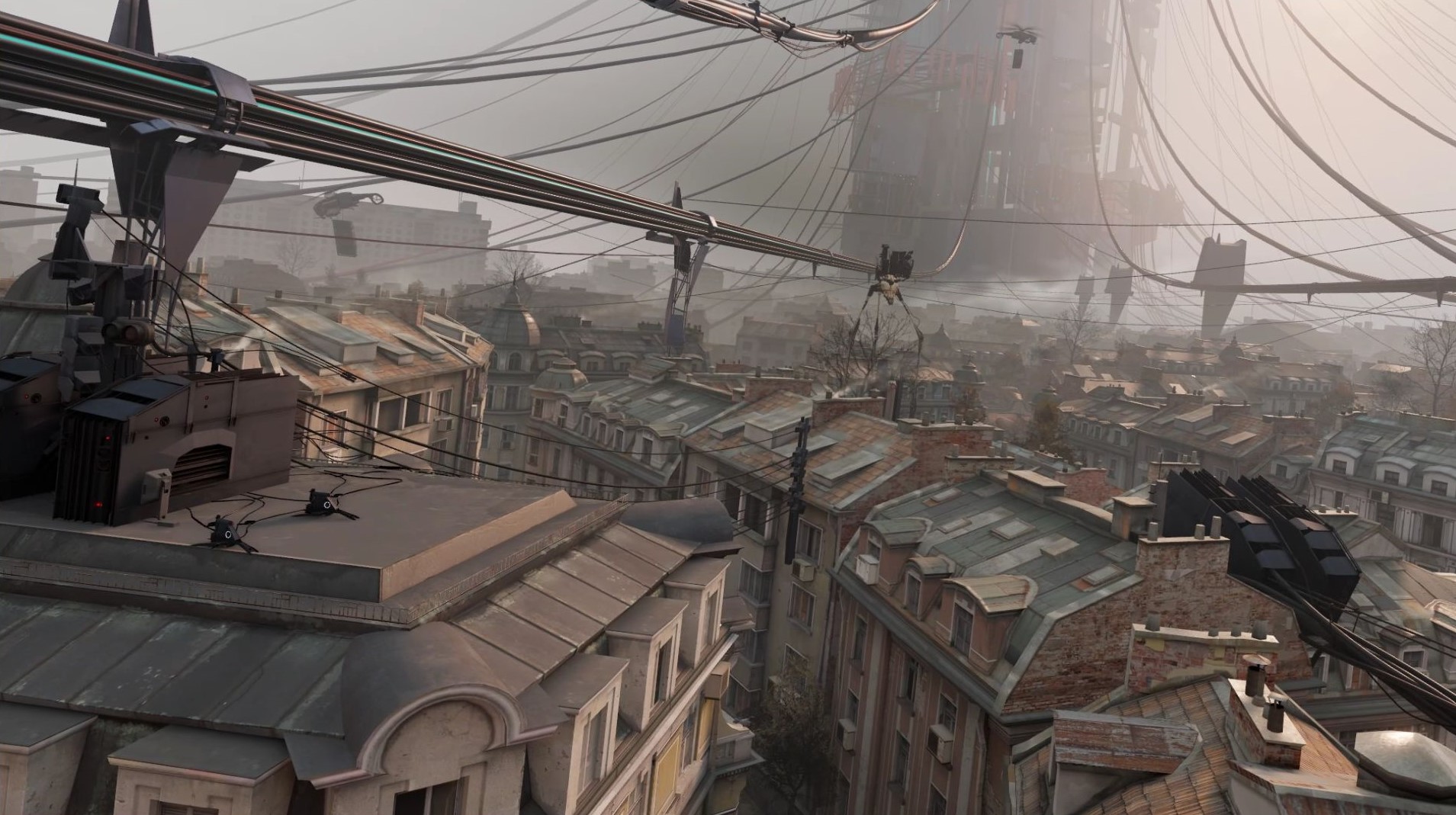
It’s important to emphasise this. Half-Life is back. Much of the discussion about Half-Life: Alyx has revolved around the fact it’s made for VR. But Alyx isn’t some VR spinoff, a collection of VR gimmicks flailing around with a headcrab stuck to its face. Valve are much subtler and smarter than that. Mechanically, narratively, and perhaps most importantly structurally, Alyx is proudly and fundamentally a Half-Life game. The VR simply acts as an amplifier to it’s Half-Life-ness, a way for Valve to offer a whole new perspective on their most-treasured FPS.
In case the title didn’t clue you in, Half-Life: Alyx’s story revolves around Alyx Vance, Gordon Freeman’s companion from Half Life 2. It takes place when Alyx is nineteen, five years before she and Freeman lead the charge against the Combine. The Resistance against the Combine exists at this point, but it’s still very much underground.
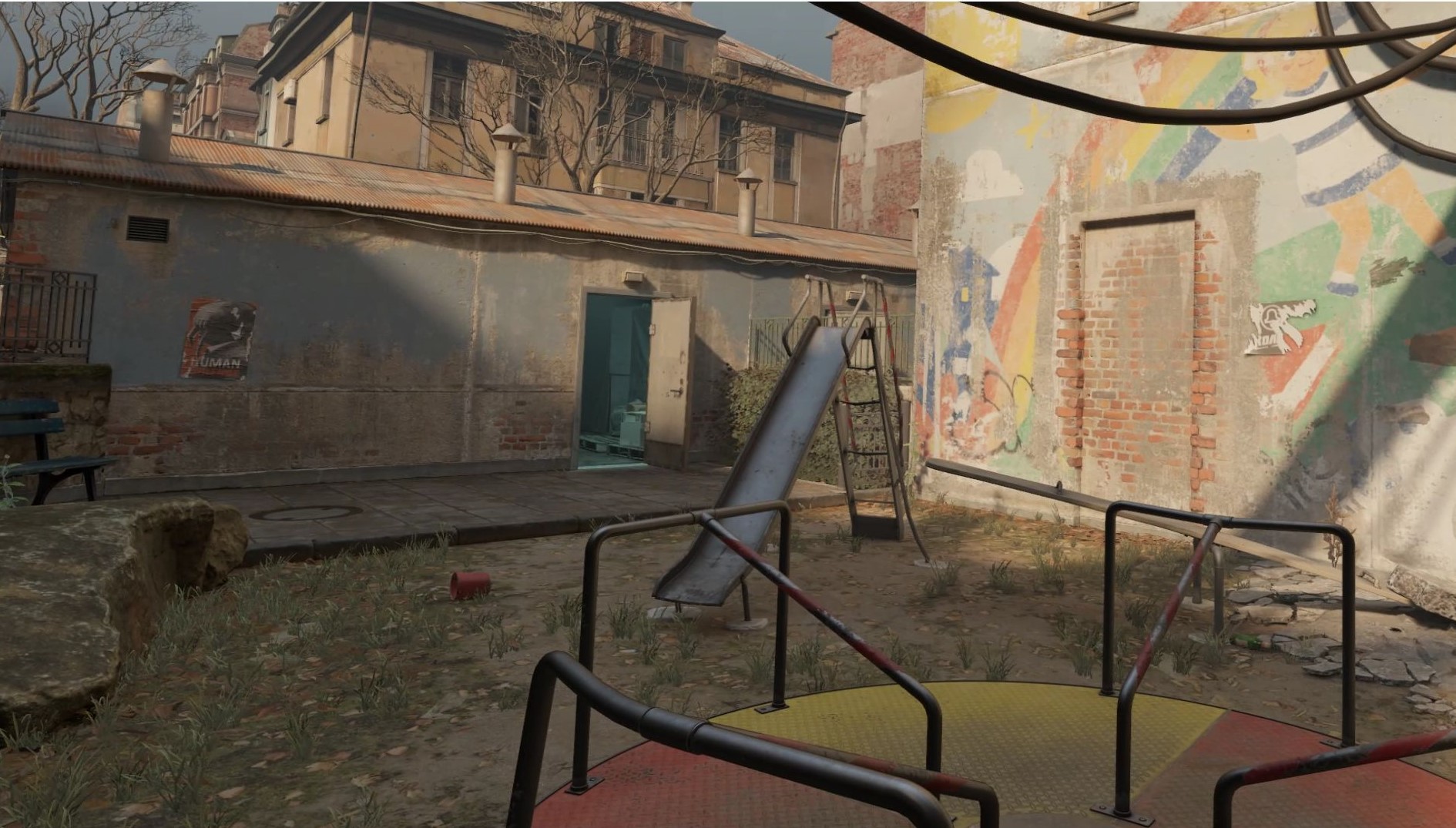
Figuratively speaking, anyway. Alyx opens with you stood on a balcony overlooking the rooftops of City 17. Ahead of you, the Citadel is still under construction, a mass of black cables drifting out from its gleaming blue spire. Striders stomp about on spindly legs between the buildings, while gunmetal choppers carry building materials to the Citadel. It’s a dramatic re-introduction to City 17, which looks a lot less boxy and a lot more detailed after sixteen years of graphical advancement. But the intro is also a powerful demonstration of VR’s ability to portray scale and depth. Perched on the table beside you are a couple of empty beer bottles. You can pick it up and toss them onto the street below, where blue-suited citizens chat furtively, and a cat slinks along the pavement.
The opening also gives you time to familiarise yourself with VR’s control scheme, offering lots of environmental objects to pick up and tinker with, as well as a short jaunt through the city that lets you figure out your preferred method of locomotion (Alyx sports two types of teleport movement and two types of continuous motion). But it isn’t long before the story kicks off proper. As Alyx returns from her recon mission, her father Eli is abducted by Civil Protection, and with her fellow resistance member Russell, she concocts a daring plan to rescue him.
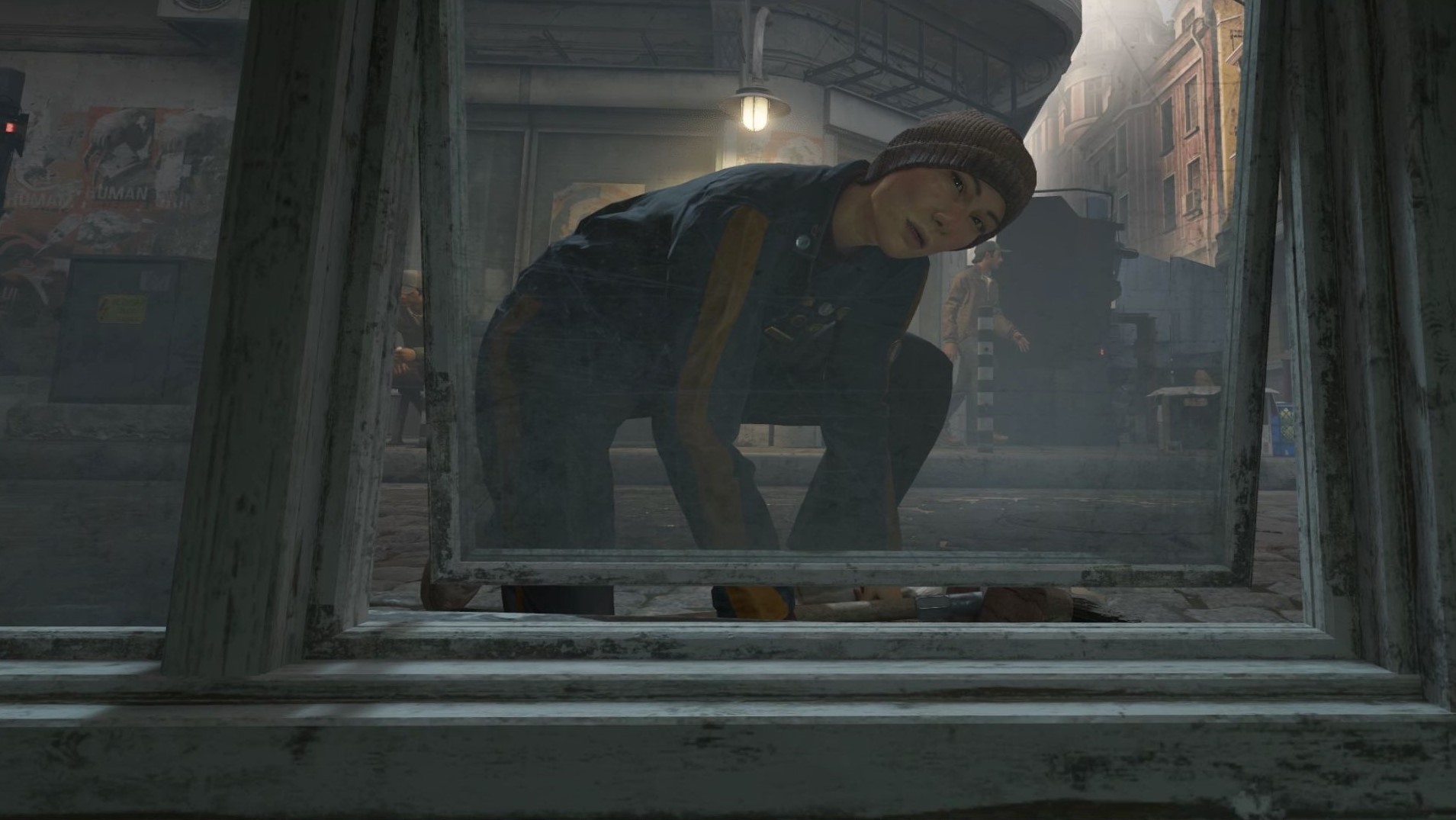
I’m not going to say much about the story in this review, but what I will say is that, while Alyx may start out retreading the second act of Half-Life 2, the plot become much more interesting and significant in its second half, gradually ramping up the stakes to an ending that has huge ramifications for the Half-Life story as we understand it. When Alyx was announced, a lot of people were disappointed that Alyx was a prequel. But don’t assume because of this that it treads water story-wise. The consequences of its conclusion are potentially enormous.
Before packing you off by train to the City’s Quarantine Zone, Russell gives you two things, a pistol and a pair of gravity gloves (or “Russells” as he hopes people will one day call them). The Russells act as your HUD, giving you information on your health, ammo count, etcetera, but they’re chiefly used to pick up objects from a distance.
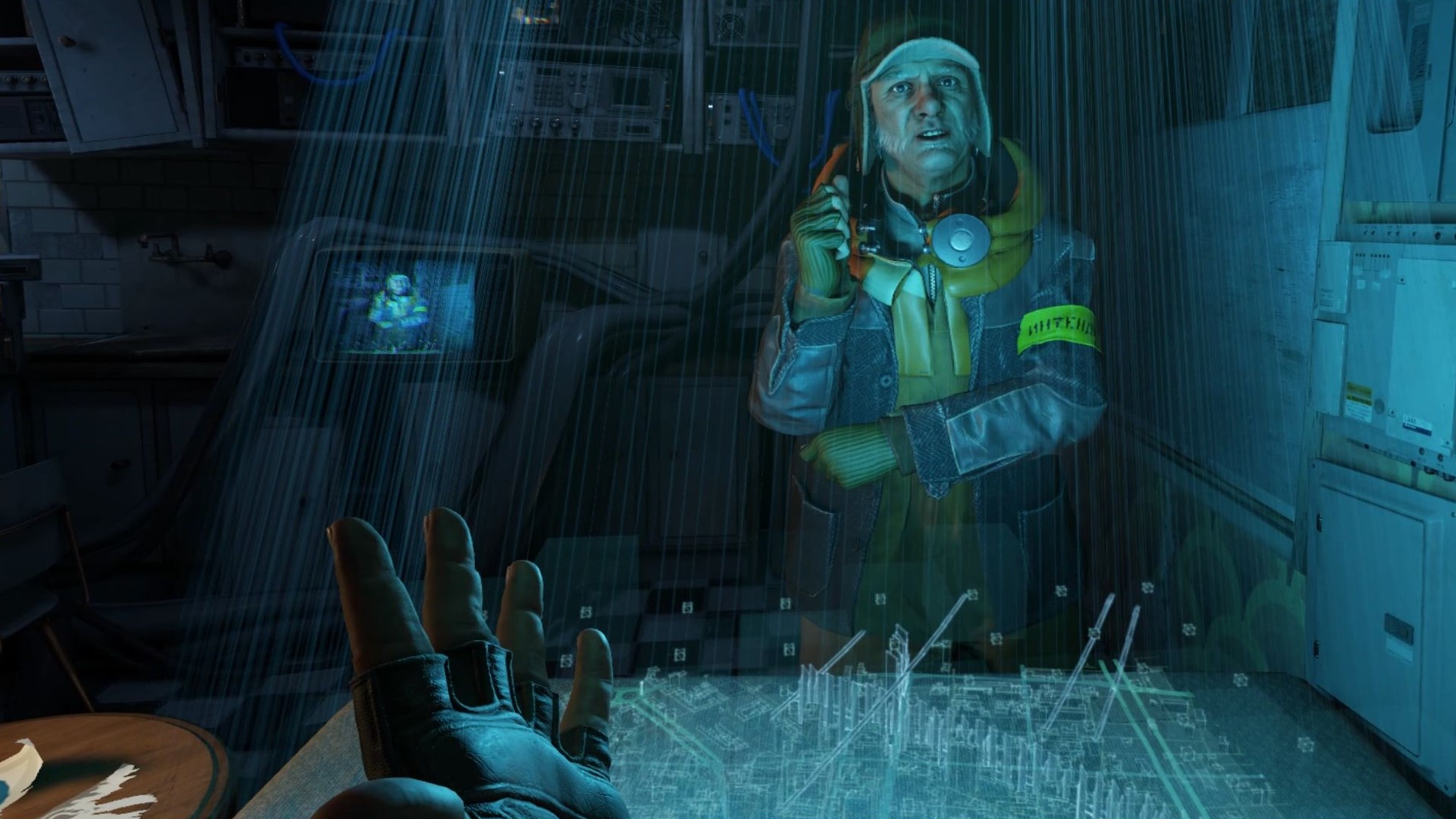
This “force-pull” idea is not new to VR, but Alyx’s system works slightly differently to most other VR games. To use the gravity gloves, you point your touch controller at an in-game object, press the trigger button to lock it in, then flick your wrist upward to spring it into the air. Then you need to manually catch it by pressing the grip button when it nears your hand.
At first, this feels slightly unintuitive, but when you figure out the flick-and-catch manoeuvre, it becomes incredibly satisfying. Unlike Half-Life 2’s Gravity gun, the gloves can’t be used directly as a weapon. Instead, they’re a tool for scavenging and puzzle solving. You’ll use them to snatch a pistol magazine from across a room, to pull down a puzzle item from a shelf that you otherwise can’t reach. They do serve one combat purpose later on, namely plucking enemy grenades from midair so you can physically throw them back.
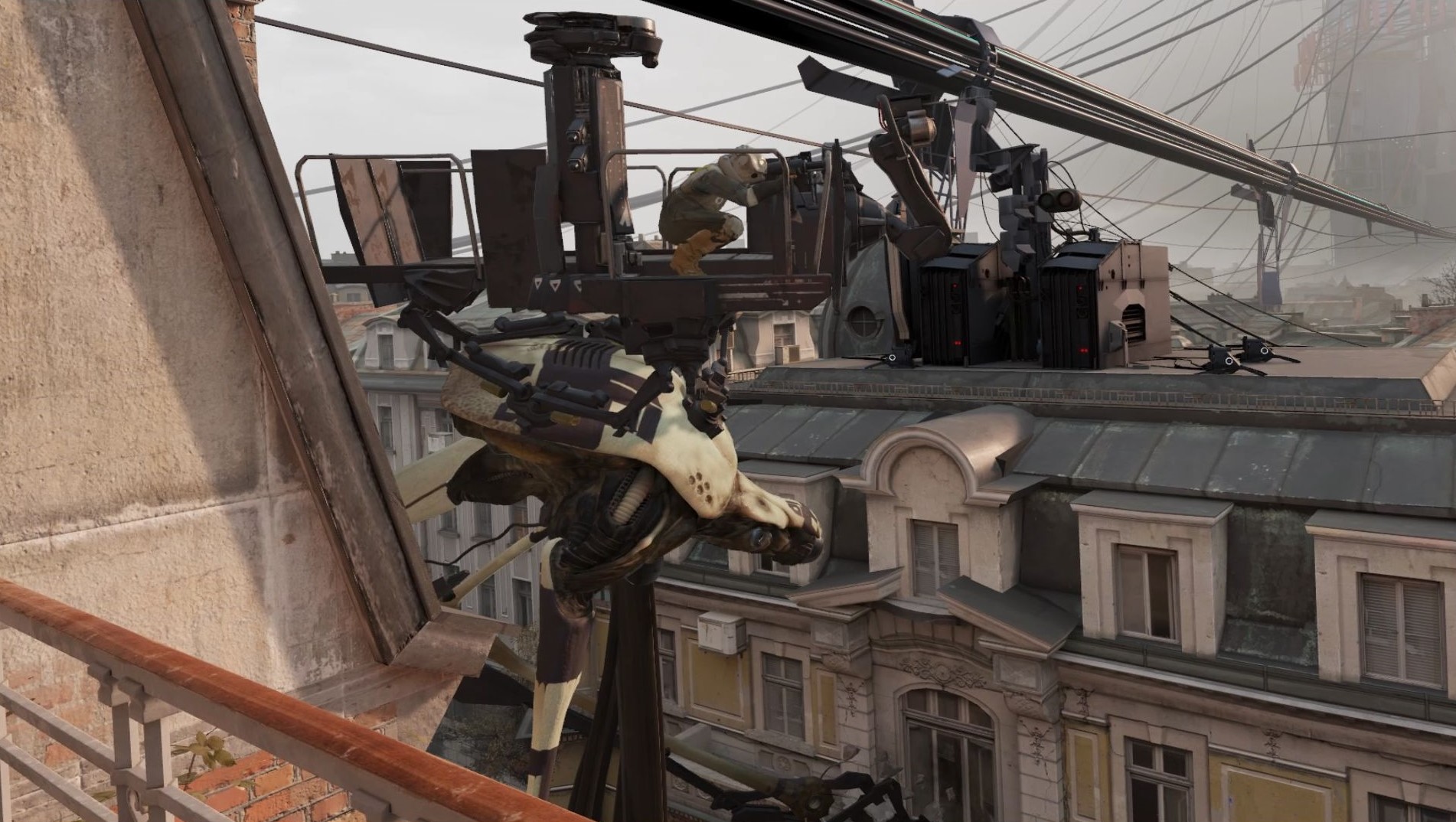
While Alyx takes its setting and characters primarily from Half-Life 2, in terms of play it most closely resembles the opening chapters of the original Half-Life. The early stages in particular are almost pure survival horror, seeing you delve into City 17’s underbelly of dark sewers and dank subways, filled with corpses and headcrabs and zombies (Oh my!). Ammo is forever scarce and, must be actively searched for. You’ll be clearing shelves with a sweep of your arm, feeling a surge of joy as you pluck up a couple of shotgun shells and a nugget of “Resin”, Alyx’s sole resource used for upgrading weapons.
Speaking of weapons, Half-Life: Alyx gives you three of them. That might not sound like a lot, but each of them is much more interactively detailed than any previous Half Life firearms. Each weapon has to be manually reloaded and cocked, then aimed carefully as you would a real gun. Most weapons can be upgraded to have multiple fire-modes or attachments, such as a grenade launcher for your shotgun, or a burst-fire for your pistol.

They also feel fantastic to shoot. The gunplay in Alyx has much more nuance thanks to VR’s unique control scheme. You have to learn how to aim, to keep your wrist down and your grip steady to avoid your shots zipping over enemy heads. In the early stages, each bullet that hits home feels like an achievement. As you delve further into the game, you’ll become more confident, able to shoot from the hip more. The first time I took out a headcrab mid-leap, I genuinely punched the air, it felt so satisfying.
The guns are great, but what makes Alyx such a successful VR shooter are the enemies you face. Half-Life’s monstrous menagerie is that much more there in Alyx, and it’s not just because of the 3D effect. They’ve been designed to seem bulkier and more powerful. Headcrab zombies lurch toward you like a drunken boxer, while the headcrabs themselves feel twice as dangerous as they did before, with thick, leathery bodies that are so heavy Alyx struggles to pick them up with one hand. I think my favourite redesign is the barnacles, which are now astonishingly gross, a giant, prolapsed mouth lined with hundreds of teeth that’s constantly dripping drool and vomits explosively whenever it eats or is killed. I absolutely love hand-feeding live grenades to those ceiling-dwelling bastards.
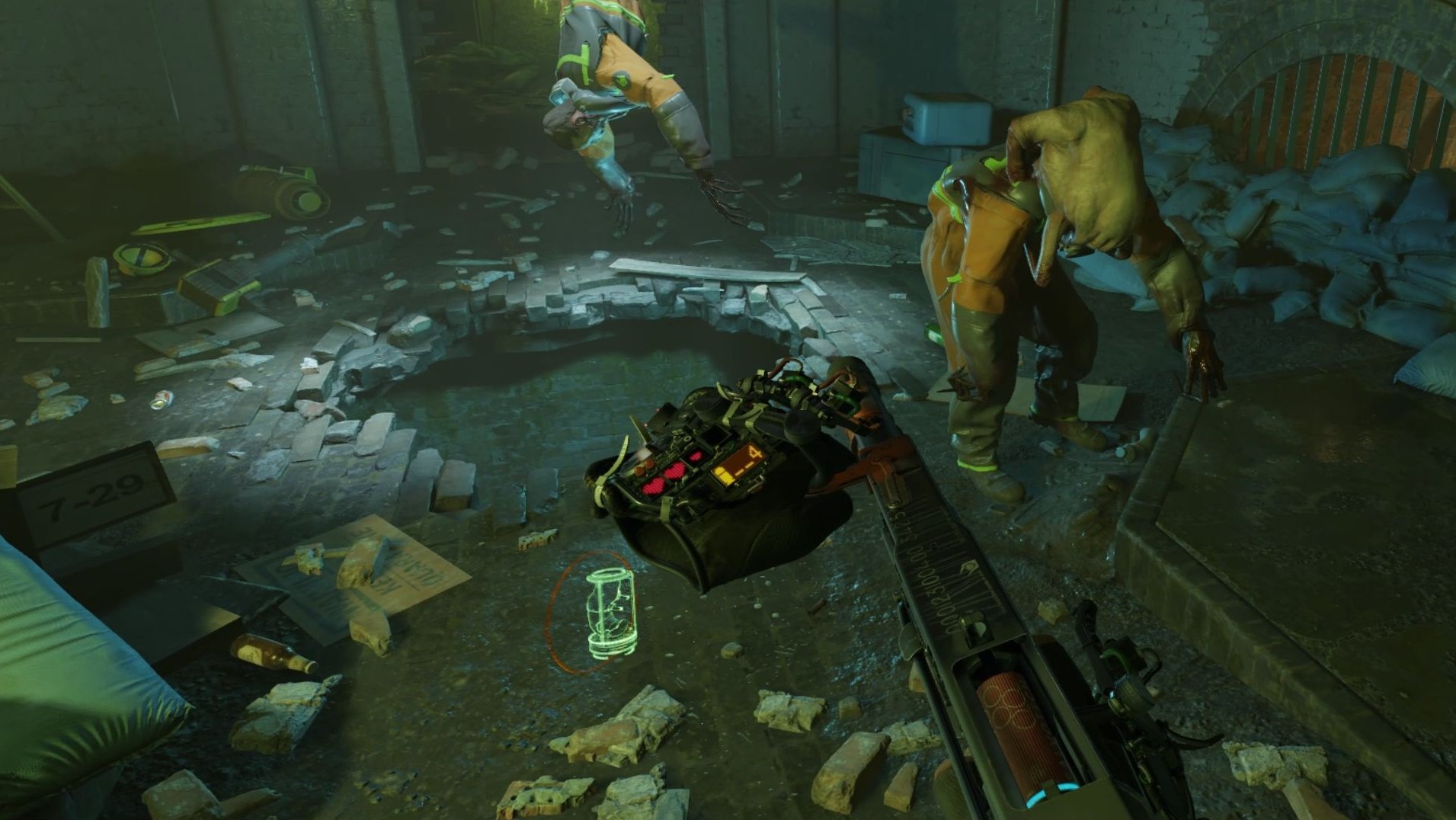
In general, Half-Life: Alyx has a more squelchy edge to its horror. One of the most elaborate levels is the North-Star hotel, a dilapidated stone-built warren almost completely infested by Xen biology. The rooms writhe and seethe with strange flora, tendrils that follow you around the room, pustules that swell up and burst in a cloud of damaging spores if you get too near them, little hand-plants that reward you with a new type of grenade if you tickle their bellies. Some of these effects are truly remarkable. I should point out here that the level of detail in Half-Life Alyx is astonishing across the board. I played it on an Oculus Quest, which is obviously not the headset Alyx was designed for, but the clarity of the imagine inside the headset is phenomenal. The texturing on the walls, the scrunched up binbags in the corners of corridors, the rumpled sheets and stained mattresses of the North-Star’s crumbling hotel rooms. I’m curious to know how exactly Valve pulled all this off.
If you’re thinking this all sounds a bit too intense, know that Valve excel at moderating the tone. Alyx isn’t short of horror, but there’s humour too, most of which comes from the conversations Alyx and Russell share over radio. Russell is a wonderfully reassuring presence in what is for the most part a lonesome game, and Flight of the Conchord’s Rhys Darby gives a standout performance in a game where all the voice-acting is top-class. Valve juggle these two elements of Alyx brilliantly, sometimes giving you both at the same time. The chapter simply named “Jeff” is arguably the best example of this. Several moments in this chapter had me going “Oh no, you’re not, oh my God you ARE serious,” then laughing and squealing as I had my virtual hand clapped over my virtual mouth. I don’t want to spoil it so I won’t say any more. But when you meet Jeff, you’ll understand.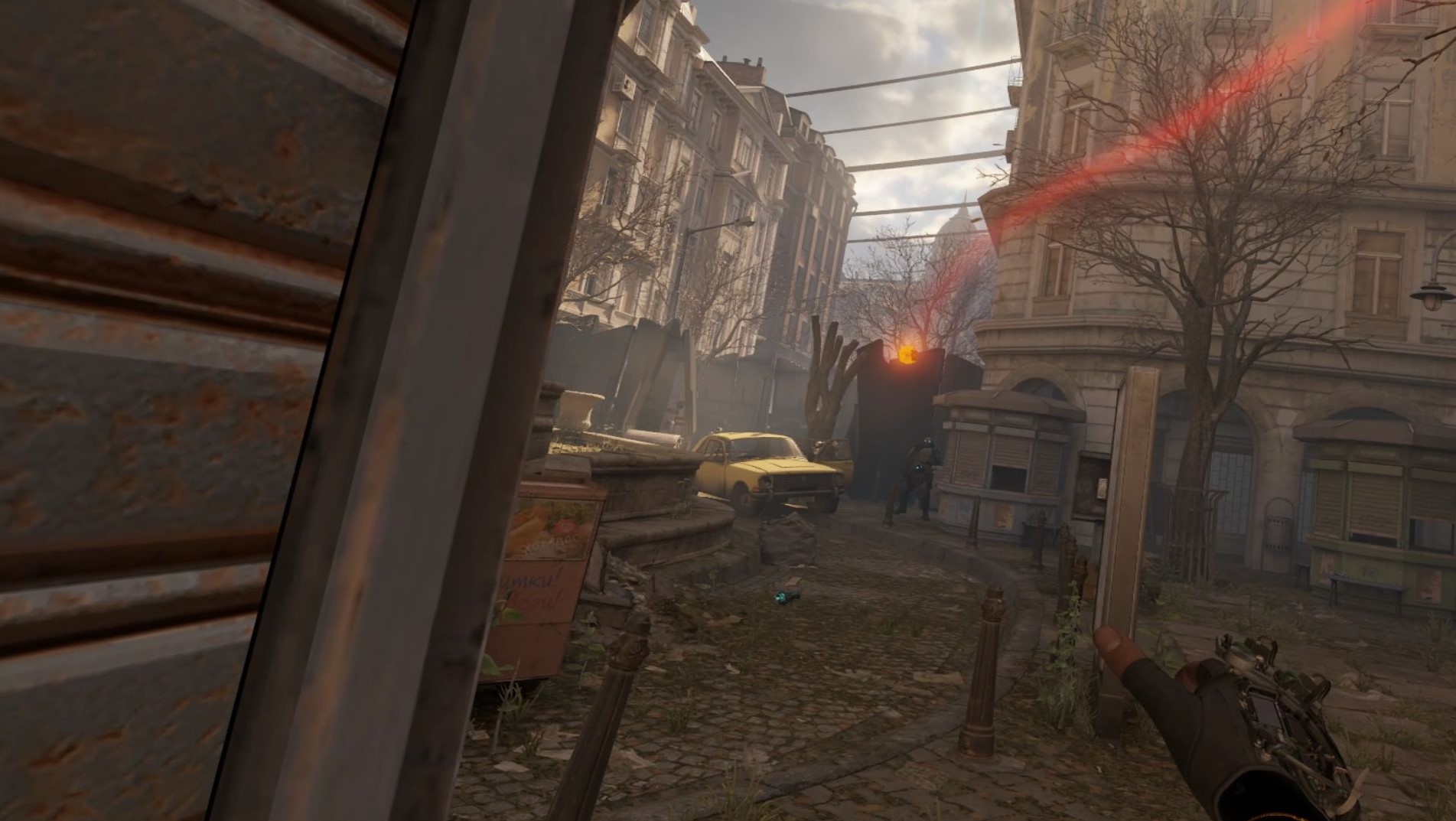
For the most part Alyx is a tremendous piece of work. But it isn’t completely free of flaws. Fighting the Combine can be a frustrating experience. All but the most basic of grunts are heavily armoured and equipped with powerful weapons that can wipe you out in a couple of shots. It’s very easy to become locked down behind a piece of cover, only to then be flushed out of it when one of the gasmask-wearing gits deploys a Manhack. The game could do with a fourth weapon that effectively counters these heavier grunts, or simply have more enemies with lighter armour to lend Combine combat more flow.
Meanwhile, alongside your gravity gloves and your guns, you’re also equipped with a device for hacking into combine technology. This is done by playing a series of holographic VR minigames. One of these involves tracing electrical wires through walls and rerouting them, while another sees you manipulating a holographic sphere. I like all of these, and the latter is a fantastic showcase of the stereoscopic 3D effect, but they also crop up a little too frequently, to the point where they start to feel like obstructions to progress rather than fun parts of the game. Also, the wire-tracing element can be fiddly, often the wires don’t appear unless you push yourself right into the wall, which can be quite uncomfortable if you’re having to reach past or into other objects like cupboards.
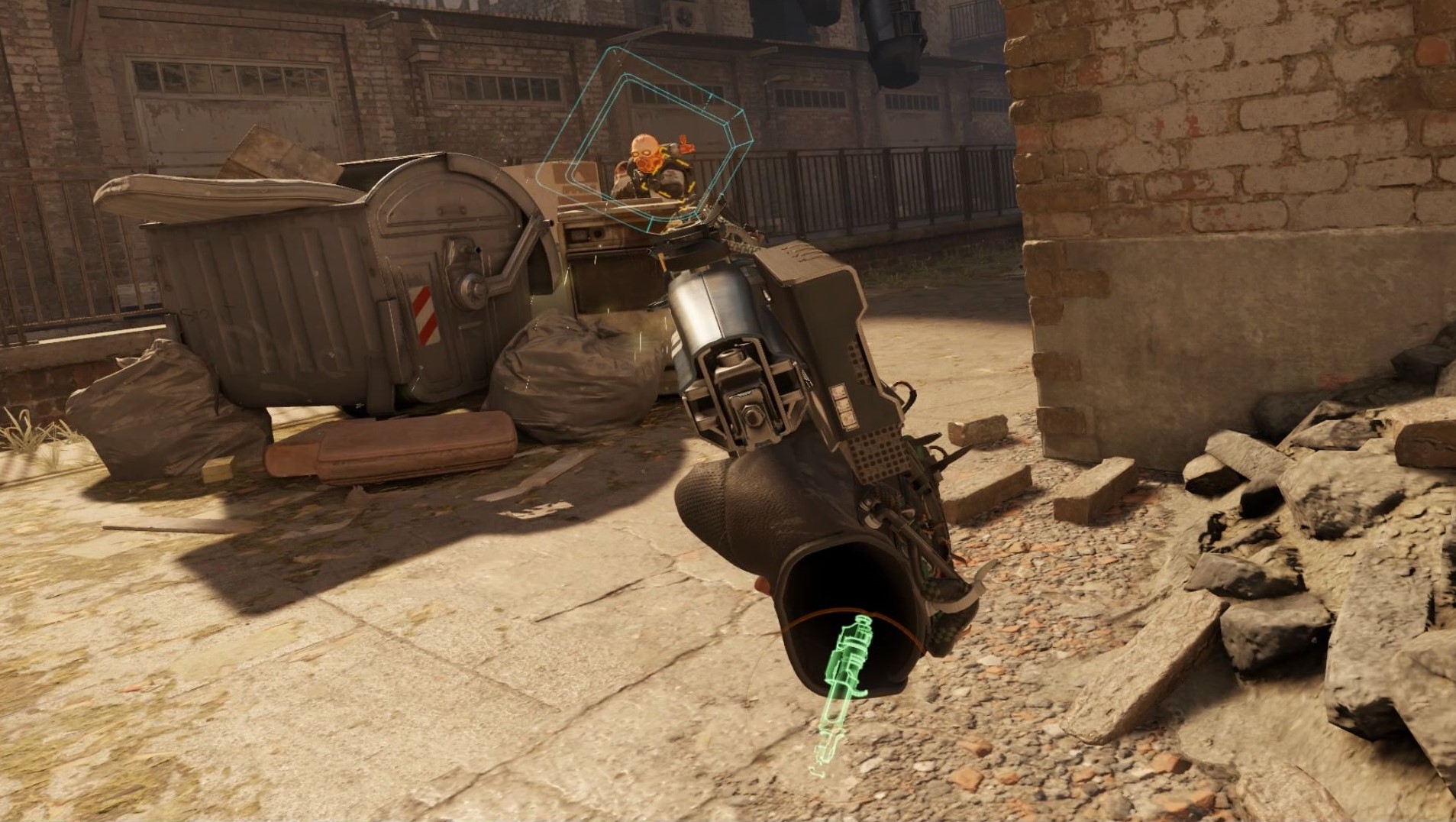
I should also point out that my own experience of the game via Quest + Link was not exactly ideal. In fairness to Valve, the Quest is far from the primary supported headset. Nonetheless, a lot of people will have bought the Quest to play Alyx, so it’s worth sharing my experience with it. Using the Quest and Link means you have multiple nested dashboards between you and the game – the Quest’s dashboard, the Rift’s dashboard, AND Steam VR. Although running the game was never a problem, the setup could be quite fiddly.
More of a problem was that every time I took the headset off for a comfort break, the game would bug out and I’d have to restart it. As part of this, I’d have to reset my floor position because on restart Alyx would suddenly be hovering six feet in the air. One last issue I encountered was that sometimes textures wouldn’t load in certain areas. At first, I thought this was because I was recording footage at the same time, but it seems more likely that I was moving around before the game was “ready” and this caused problems with texture loading.
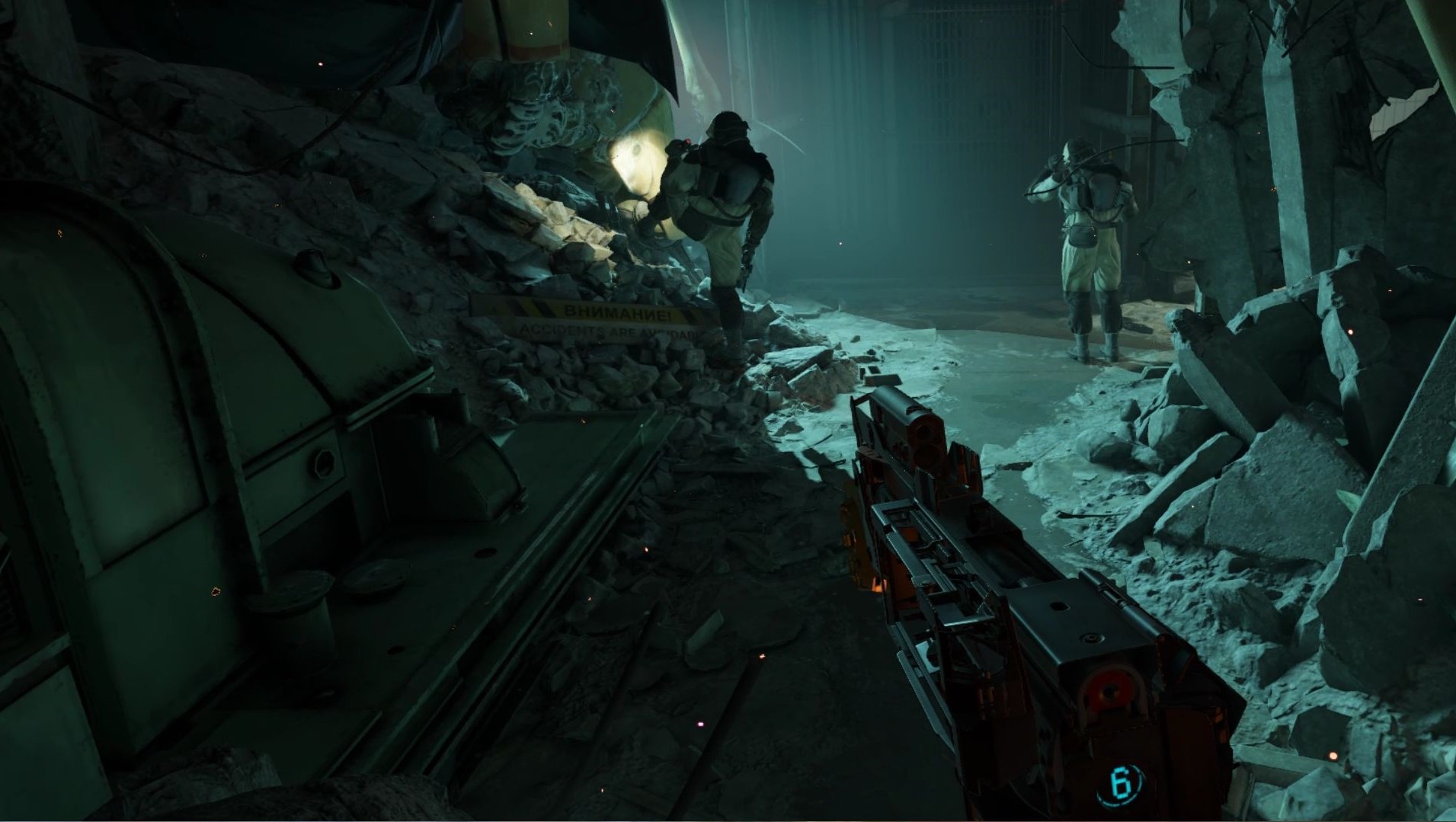
While these issues were annoying, all of them were fairly easily resolved, and none of them stopped me from having an absolutely fantastic time with Alyx. It’s truly impressive how Valve has retained the “feel” of Half-Life in what is a very different format. It’s in the way each chapter offers a different level or challenge without ever breaking the environmental flow, transporting you seamlessly from a subway to a hotel to a brick-and-mortar industrial district. It’s in the incredible audio design – the hiss of the headcrabs, the flatlining bleep of a Combine’s heart monitor, the chirpy trills of a health station. It’s in the blend of horror, action, and that all important sprinkling of wit.
VR takes these aspects of Half-Life and elevates them to a new level. Remember Half-Life 2’s striders? How terrifying those massive, spindly death-spiders seemed on a 17-inch flatscreen in 2004. Now imagine one stomping around the corner of a tower block as you hop between a pair of rooftop balconies, almost crushing you under its thundering feet as it strides right over you. Imagine having to pull a headcrab off your chest, then pressing your pistol into its stomach-cavity as you blast it into mulch. Imagine tossing an explosive canister at a headcrab-zombie and then snapping up your pistol to detonate it midair. Alyx is filled with such moments of awe and wonder. It’s unquestionably the best VR game made yet, and a spellbinding return of this most elusive of shooters.


MSI MPG Velox 100R Chassis Review
October 14 2021 | 15:04






Want to comment? Please log in.